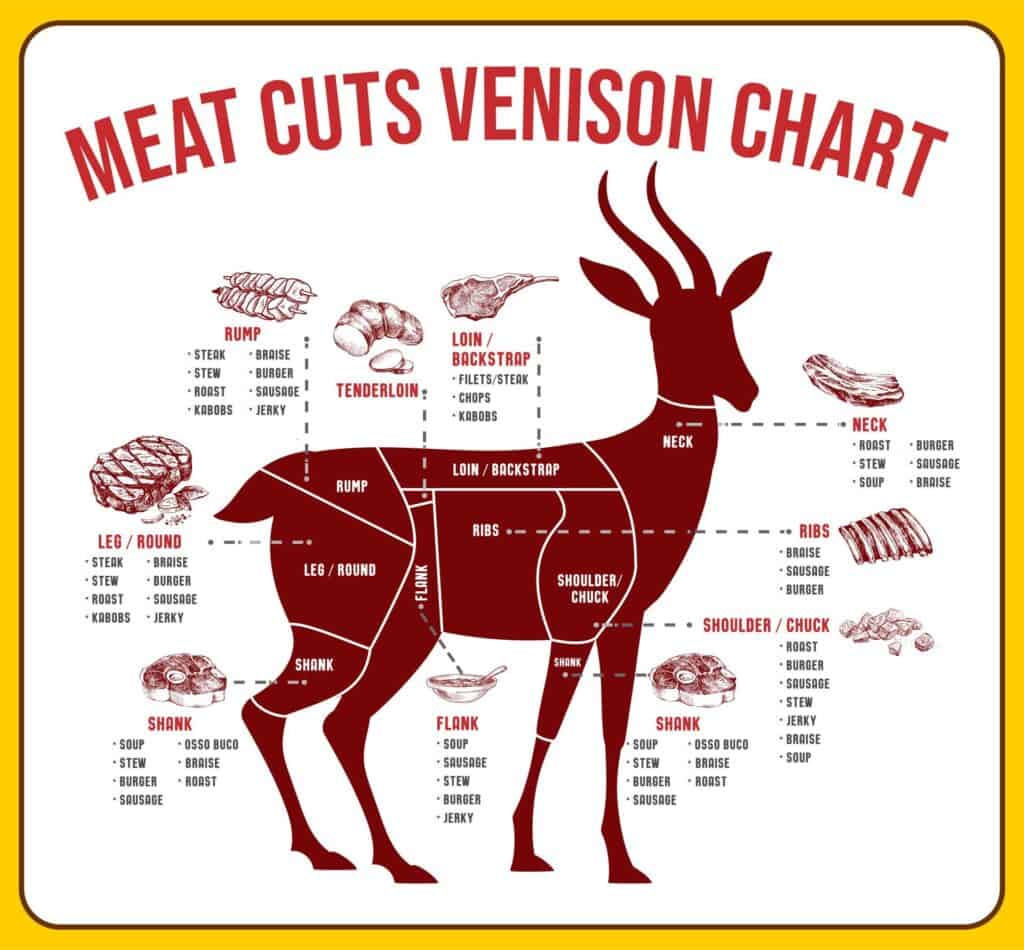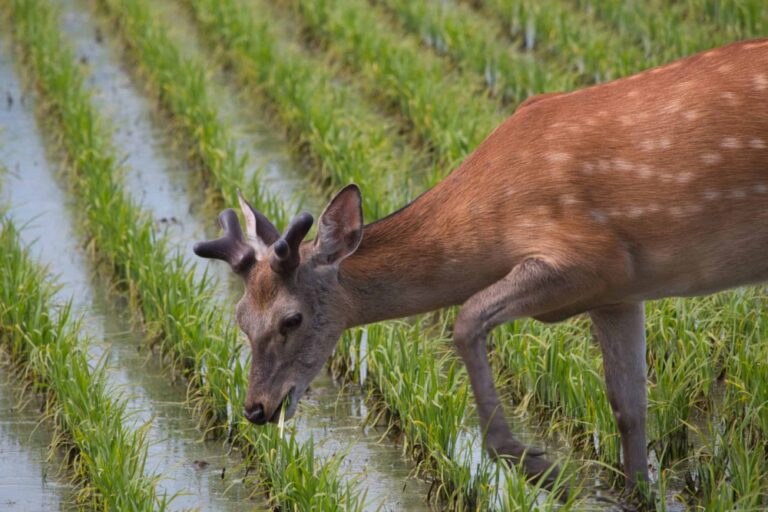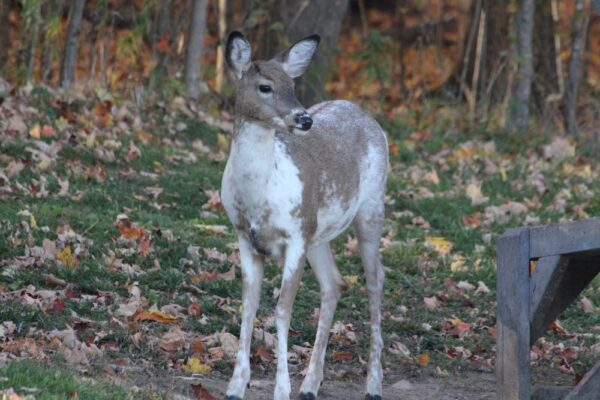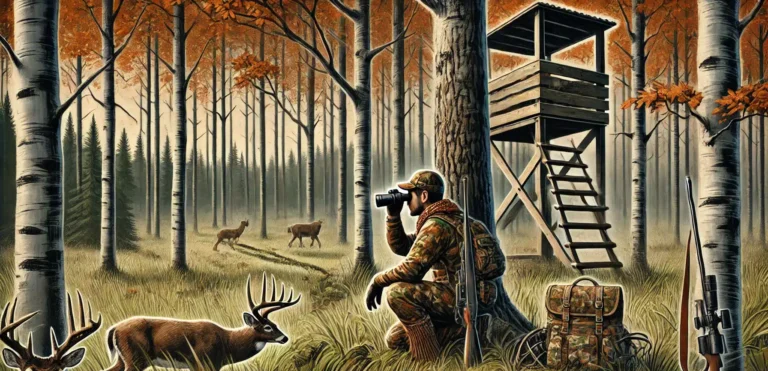The art of tenderizing venison, the lean and flavorful meat from deer, has gained popularity among culinary enthusiasts due to its rich taste and nutritional benefits. However, venison can be notoriously tricky if not handled and prepared correctly. This article will explore practical techniques to tenderize venison, ensuring a succulent and melt-in-your-mouth dining experience.
Let’s discover the secrets of transforming tough venison into a culinary masterpiece!
- Choose the Right Cuts: Begin by selecting the appropriate cuts of venison for tenderness. Tenderloin, ribeye, and sirloin are generally the most tender cuts and require minimal tenderizing. Extra care is needed to achieve optimal tenderness if you have stricter cuts like the shoulder or leg.
- Marinating: Marinating is a time-tested method for tenderizing venison. A marinade helps break down the muscle fibers, infuse flavors, and add moisture. Consider using acidic ingredients like vinegar, wine, citrus juices, or buttermilk to tenderize the meat. Combine them with aromatic herbs, spices, and a touch of oil. Allow the venison to marinate in the refrigerator for at least 4-8 hours or overnight, depending on the thickness of the cuts.
- Dry Aging: For more significant cuts or whole venison roasts, dry aging can work wonders in tenderizing the meat. This process involves hanging the meat in a perfect, well-ventilated space for a few days to allow natural enzymes to break down the muscle fibers. Dry aging can enhance the flavor and tenderness of venison but requires careful monitoring of temperature and humidity to prevent spoilage.
- Mechanical Tenderization: Mechanical tenderization can be beneficial when dealing with tough cuts. Using a meat mallet or a tenderizing tool, gently pound the meat to break down the fibers and create a more uniform thickness. This technique also helps to tenderize thicker cuts and even out cooking times.
- Slow Cooking: Slow cooking methods such as braising, stewing, or using a slow cooker are excellent for tenderizing venison. The low and slow cooking process allows collagen in the meat to break down into gelatin, resulting in tender and succulent meat. Add flavorful liquids like broth, wine, or marinades to enhance the taste and tenderness.
- Resting: After cooking, allow the venison to rest for a few minutes before slicing. Resting helps redistribute the juices, ensuring a moist and tender texture. Cover the meat loosely with foil to retain heat and prevent excessive moisture loss.
- Slicing Against the Grain: Remember to slice the venison against the grain when it’s time to serve. Cutting perpendicular to the muscle fibers minimizes the chewiness and promotes tenderness. This simple technique can make a notable difference in the overall eating experience.
Tenderizing venison is a crucial step in unlocking its full potential. Whether you marinate, dry age, mechanically tenderize, or employ slow cooking methods, each technique contributes to a succulent and enjoyable dining experience. Remember to experiment with different approaches and cuts of venison to find your preferred method. With these tips in mind, you’ll be well on your way to mastering the art of tenderizing venison and creating delectable dishes that impress family and friends.
FAQs for Tenderizing Venison
Q: How do you cook deer meat?
A: Cooking deer meat and venison requires attention to detail due to its lean nature and distinct flavor. Here’s a basic guide on how to cook deer meat:
Choose the Right Cut: Deer meat comes in various cuts, such as steaks, roasts, and ground meat. Different cuts require different cooking methods. For example, lean cuts like loin and tenderloin are best suited for quick cooking methods, while tougher cuts can benefit from slower cooking to tenderize them.
Marination: Marinating deer meat can help enhance its flavor and tenderness. Use a marinade with acidic ingredients like vinegar or citrus juice and your preferred herbs, spices, and oils. Let the meat marinate in the refrigerator for a few hours or overnight.
Seasoning: Season deer meat with herbs, spices, and flavorings. Remember that deer meat has a unique taste, so you may want to use seasonings that complement its natural flavors.
Cooking Methods:
- Grilling: Grill venison steaks or skewers over direct heat temporarily to maintain their tenderness and prevent overcooking.
- Pan-Frying: Heat a skillet with oil or butter and cook venison steaks or medallions over medium-high heat. Be mindful of the cooking time to avoid overcooking and drying the meat.
- Roasting: Preheat the oven and cook the meat at a lower temperature for larger cuts like roasts to ensure even cooking. Use a meat thermometer to monitor internal temperature and prevent overcooking.
- Slow Cooking: Tough cuts of venison can be slow-cooked in a crockpot or Dutch oven with liquid, vegetables, and seasonings. Slow cooking helps tenderize the meat and develop rich flavors.
- Stewing: Deer meat can be used in stews and chili. Cube the meat and simmer it with broth, vegetables, and seasonings until it becomes tender.
Cooking Temperature: To ensure safe consumption, cook deer meat to an internal temperature of at least 160°F (71°C). Use a meat thermometer to gauge the temperature accurately.
Resting: After cooking, allow the meat to rest for a few minutes before slicing. This helps retain its juices and tenderness.
Serving: Serve cooked deer meat with side dishes, sauces, or condiments that complement its flavor. Consider pairing it with vegetables, grains, or potatoes.
Remember that deer meat can have a distinct flavor, so experimenting with different cooking methods and seasonings can help you find your preferred way to enjoy it.
Q: How do you cook a deer steak? Or How to cook deer steak?
A: Cooking a deer steak involves treating the lean meat carefully to preserve its tenderness and flavor. Here’s a simple guide on how to cook a deer steak:
Ingredients:
- Deer steak (venison)
- Olive oil or cooking oil
- Salt and pepper
- Optional: Herbs, spices, marinade, butter, garlic
Instructions:
Prepare the Steak
Take the deer steak from the refrigerator and let it reach room temperature for 15-30 minutes. This ensures even cooking.
- Pat the steak dry with paper towels to remove excess moisture. This helps with browning.
Season the Steak:
- Brush both sides of the deer steak with a thin layer of olive or cooking oil. This helps prevent sticking and enhances browning.
- Season the steak with salt and pepper. You can also use your favorite herbs and spices to add flavor. Remember that venison has a unique taste, so seasonings should complement its natural flavors.
Preheat the Cooking Surface:
- Preheat a skillet, grill, or pan over medium-high heat. Ensure the surface is hot before adding the steak.
Cook the Steak:
- Place the seasoned deer steak on the hot cooking surface. You should hear a sizzling sound when the meat hits the surface.
- For a medium-rare to medium doneness, cook the steak for 3-4 minutes on each side. Adjust the cooking time based on the thickness of the steak and your desired level of doneness.
- Use tongs to flip the steak gently. Avoid using a fork, as piercing the meat can cause juices to escape.
Add Flavor (Optional):
- While cooking the second side of the steak, you can add flavor by basting it with melted butter, minced garlic, or fresh herbs.
Check Doneness:
- Use a meat thermometer to check the internal temperature of the steak. Aim for a medium-rare internal temperature of about 135°F (57°C). For medium, around 145°F (63°C).
Rest the Steak:
- Remove the steak from the cooking surface and place it on a clean plate. Let the steak rest for a few minutes before slicing. This redistributes the juices and ensures a juicy, flavorful steak.
Slice and Serve:
- Slice the deer steak against the grain to maximize tenderness. Serve the cooked steak with your favorite side dishes, sauces, or garnishes.
Remember that cooking times can vary based on the thickness of the steak and the heat source. A meat thermometer helps ensure that the steak reaches your desired level of doneness without overcooking. Enjoy your deliciously cooked deer steak!
Q: How to cook deer backstrap?
A: Cooking deer backstrap, also known as venison loin, is a wonderful way to enjoy one of the most tender and flavorful cuts of meat from a deer. Here’s a step-by-step guide on how to cook deer backstrap:
Ingredients:
- Deer backstrap (venison loin)
- Olive oil or cooking oil
- Salt and pepper
- Optional: Herbs, spices, marinade, garlic, butter
Instructions:
Prepare the Backstrap:
- Remove the deer backstrap from the refrigerator and let it come to room temperature for 15-30 minutes.
- Pat the backstrap dry with paper towels to remove any excess moisture.
Season the Backstrap:
- Brush both sides of the backstrap with a light olive or cooking oil layer to prevent sticking and promote even browning.
- Season the backstrap generously with salt and pepper. You can also use your favorite herbs and spices to enhance the flavor.
Preheat the Cooking Surface:
- Preheat a skillet, grill, or pan over medium-high heat. Make sure the surface is hot before adding the backstrap.
Sear the Backstrap:
- Place the seasoned deer backstrap on the hot cooking surface. You should hear a sizzling sound when it makes contact.
- Sear the backstrap for about 2-3 minutes on each side. This initial searing helps develop a flavorful crust.
Add Flavor (Optional):
- You can add flavor while searing the second side by basting the backstrap with melted butter, minced garlic, or fresh herbs.
Check Doneness:
- Use a meat thermometer to check the internal temperature of the backstrap. Aim for a medium-rare internal temperature of about 135°F (57°C). For medium, around 145°F (63°C).
Rest the Backstrap:
- Remove the backstrap from the cooking surface and place it on a cutting board or clean plate. Allow the meat to rest for about 5-10 minutes before slicing. This rest time helps the juices redistribute, resulting in a juicy and flavorful backstrap.
Slice and Serve:
- Slice the deer backstrap against the grain into thin pieces. This maximizes tenderness and makes it easier to enjoy.
- Serve the cooked backstrap with your choice of side dishes, sauces, or garnishes.
Remember that deer backstrap is a lean and tender cut of meat, so be cautious not to overcook it. A meat thermometer ensures you achieve the desired level of doneness while maintaining the backstrap’s tenderness and rich flavor. Enjoy your perfectly cooked deer backstrap!
Q: How do you cook deer tenderloin?
A: Cooking deer tenderloin, or venison tenderloin, requires special care to preserve its tenderness and delicate flavor. Here’s a step-by-step guide on how to cook deer tenderloin:
Ingredients:
- Deer tenderloin (venison tenderloin)
- Olive oil or cooking oil
- Salt and pepper
- Optional: Herbs, spices, garlic, butter
Instructions:
Prepare the Tenderloin:
- Take the deer tenderloin from the refrigerator and allow it to come to room temperature for 15-30 minutes.
- Gently pat the tenderloin dry with paper towels to remove any excess moisture.
Season the Tenderloin:
- Brush both sides of the tenderloin with a light olive or cooking oil coat to prevent sticking and promote even browning.
- Season the tenderloin with salt and pepper. You can also use your preferred herbs and spices to enhance the flavor.
Preheat the Cooking Surface:
- Preheat a skillet or pan over medium-high heat. Ensure the surface is hot before adding the tenderloin.
Sear the Tenderloin:
- Place the seasoned deer tenderloin on the hot cooking surface. You should hear a sizzling sound when it touches the surface.
- Sear the tenderloin for about 2-3 minutes on each side. The goal is to achieve a golden-brown crust.
Add Flavor (Optional):
- You can add extra flavor while searing the second side by basting the tenderloin with melted butter, minced garlic, or fresh herbs.
Check Doneness:
- Use a meat thermometer to check the internal temperature of the tenderloin. Aim for a medium-rare internal temperature of about 135°F (57°C). For medium, around 145°F (63°C).
Rest the Tenderloin:
- Remove the tenderloin from the cooking surface and place it on a cutting board or clean plate. Allow it to rest for about 5-10 minutes. This resting period helps the juices redistribute for a succulent result.
Slice and Serve:
- Slice the deer tenderloin into thin pieces against the grain. This ensures tenderness and easy enjoyment.
- Serve the cooked tenderloin with your choice of side dishes, sauces, or accompaniments.
Deer tenderloin is a prized cut known for its exceptional tenderness, so it’s important to avoid overcooking it. Using a meat thermometer allows you to achieve the desired level of doneness while maintaining the tenderloin’s delicate flavor and texture. Enjoy your perfectly cooked deer tenderloin!








